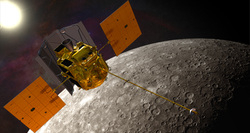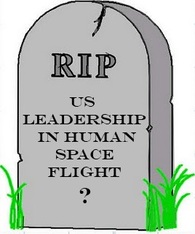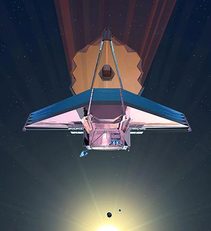
 Since the Dawn spacecraft injected into orbit around the asteroid recently (see blog entry for 16 July 2011) the imaging system has been busy returning pictures to Earth. NASA has a website with full details http://dawn.jpl.nasa.gov/, but a sample of the preliminary data can be seen on the picture gallery page.
0 Comments
 Since Messenger arrived in orbit around Mercury in March (see blog entry for 18 March 2011), there has been very little in the media about the images being received from the spacecraft. NASA has a Messenger website with full details of the data received from Mercury http://www.nasa.gov/mission_pages/messenger/main/index.html, but please see picture gallery for a taster of the stunning quality of the images received.  Shuttle Atlantis touched down at 09.56 UTC on Thursday 21 July 2011, bringing to an end 30 years of the shuttle flights (see picture gallery for an extraordinary picture of Atlantis’s reentry track taken from the International Space Station (ISS)). The programme is assured to be a major chapter in the history of human spaceflight – with its many highs, and tragic lows. With the loss of 14 brave souls it is finally time to appreciate that the shuttle is not only a brilliant engineering achievement, but also has to be recognised as too dangerous a machine to carry people into orbit. Two catastrophic failures in 135 flights makes for poor odds. But now, for the first time in 50 years, the NASA finds itself in the extraordinary position of not being capable of launching astronauts into orbit! With the ISS lifetime being extended until 2020, US astronauts will only have access via the good will of the Russians, until other means are provided by private venture launch solutions. It has to be said that the blame for this nonsensical situation must be laid firmly at the door of the Obama administration. What now for the US human spaceflight programme, now that the reins of leadership have been handed over to other potential international competitors? I suspect that, when one of these potential competitors grasp that role, the US will come to its senses, but how long will that be? US leadership in human spaceflight – R.I.P. ?  With budget and schedule over-runs, the project is being threatened with cancellation, despite full support from NASA itself. The JWST is the next-generation space observatory beyond the Hubble Space Telescope, and hopes to continue the huge legacy of scientific exploration and understanding of the Universe that was initiated by the HST. The HST’s contribution to this understanding really cannot be underestimated. As the shuttle programme finally comes to and end within the next few days, you could ask ‘what was the shuttle’s greatest scientific contribution?’ And without doubt it would the launch, and in-orbit servicing of the HST. The ISS doesn’t really count in this argument – the ISS has been (and continues to be) a great engineering enterprise, necessary if we are to learn how to live and work as humans in space, but it’s scientific value cannot be compared to that of the HST programme. There is a great deal at stake here. The measure of our civilisation is bound up in our culture, which includes facets such as art, music, literature, and our innate curiosity which drives scientific and physical exploration. I hope that sense prevails, and we see a next-generation space observatory such as the JWST to continue the spectacular research that the HST has performed over the years. Maybe the JWST will allow us to see all the way back to the creation event we call the Big Bang, and what revelations would that reveal?  The Dawn spacecraft should inject into orbit around the 530 km wide asteroid Vesta today (Saturday 16 July 2011). Confirmation should be received tomorrow (Sunday UTC) when the spacecraft begins transmission of status data. The initial orbit around Vesta should be around 16, 000 km from the asteroid, but decreasing ultimately to about 200 km over time – so the future images will be spectacular. The probe will study Vesta for about a year, before moving on the orbit the asteroid Ceres. This is made possible by the use of Dawn’s solar power ion engine. (see picture gallery)  A bitter-sweet day, and one that will go down in the history of the US human spaceflight programme. ‘Bitter’ because it saw the last ever launch of the US Space Shuttle, a“true American Icon” as Atlantis’s crew called it prior to the launch. And ‘Sweet’ because the final launch was textbook (see picture gallery). We’ve been anticipating this for some time, and now the historic moment is finally here. I watched the launch live online via NASA HD TV, and despite no doubt 10s of thousands of people logged on the coverage was perfect. I can’t help but wonder what a TV spectacle the Apollo moon landing would have been if this Internet and IT technology had been available then! What now for the US human spaceflight programme? (see blog entry for 8 January 2011 ‘US human spaceflight programme in disarray’ ). More later … |
AuthorGraham Swinerd - I hope to use this page to highlight current major events in space and spacececraft. Archives
November 2022
Categories |
 RSS Feed
RSS Feed
